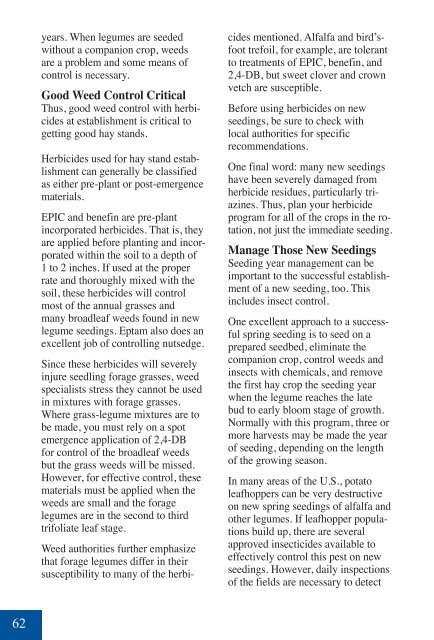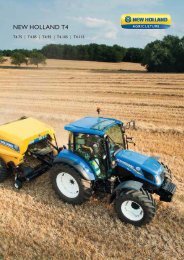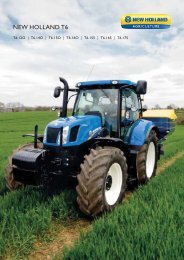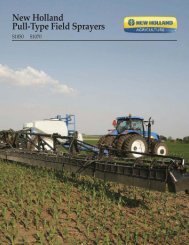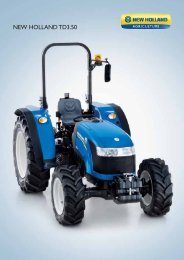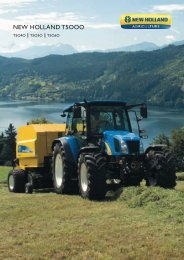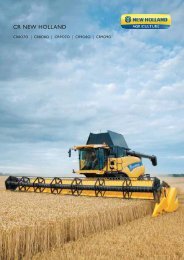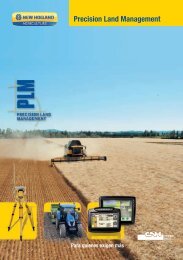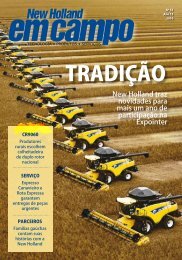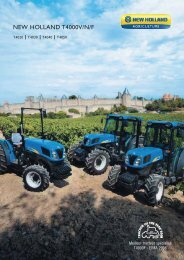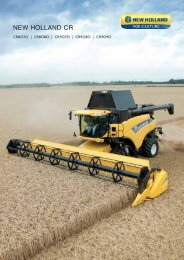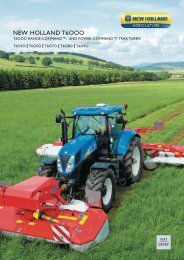You also want an ePaper? Increase the reach of your titles
YUMPU automatically turns print PDFs into web optimized ePapers that Google loves.
62<br />
years. When legumes are seeded<br />
without a companion crop, weeds<br />
are a problem and some means of<br />
control is necessary.<br />
Good Weed Control Critical<br />
Thus, good weed control with herbicides<br />
at establishment is critical to<br />
getting good hay stands.<br />
Herbicides used for hay stand establishment<br />
can generally be classified<br />
as either pre-plant or post-emergence<br />
materials.<br />
EPIC and benefin are pre-plant<br />
incorporated herbicides. That is, they<br />
are applied before planting and incorporated<br />
within the soil to a depth of<br />
1 to 2 inches. If used at the proper<br />
rate and thoroughly mixed with the<br />
soil, these herbicides will control<br />
most of the annual grasses and<br />
many broadleaf weeds found in new<br />
legume seedings. Eptam also does an<br />
excellent job of controlling nutsedge.<br />
Since these herbicides will severely<br />
injure seedling forage grasses, weed<br />
specialists stress they cannot be used<br />
in mixtures with forage grasses.<br />
Where grass-legume mixtures are to<br />
be made, you must rely on a spot<br />
emergence application of 2,4-DB<br />
for control of the broadleaf weeds<br />
but the grass weeds will be missed.<br />
However, for effective control, these<br />
materials must be applied when the<br />
weeds are small and the forage<br />
legumes are in the second to third<br />
trifoliate leaf stage.<br />
Weed authorities further emphasize<br />
that forage legumes differ in their<br />
susceptibility to many of the herbi-<br />
cides mentioned. Alfalfa and bird’sfoot<br />
trefoil, for example, are tolerant<br />
to treatments of EPIC, benefin, and<br />
2,4-DB, but sweet clover and crown<br />
vetch are susceptible.<br />
Before using herbicides on new<br />
seedings, be sure to check with<br />
local authorities for specific<br />
recommendations.<br />
One final word: many new seedings<br />
have been severely damaged from<br />
herbicide residues, particularly triazines.<br />
Thus, plan your herbicide<br />
program for all of the crops in the rotation,<br />
not just the immediate seeding.<br />
Manage Those <strong>New</strong> Seedings<br />
Seeding year management can be<br />
important to the successful establishment<br />
of a new seeding, too. This<br />
includes insect control.<br />
One excellent approach to a successful<br />
spring seeding is to seed on a<br />
prepared seedbed, eliminate the<br />
companion crop, control weeds and<br />
insects with chemicals, and remove<br />
the first hay crop the seeding year<br />
when the legume reaches the late<br />
bud to early bloom stage of growth.<br />
Normally with this program, three or<br />
more harvests may be made the year<br />
of seeding, depending on the length<br />
of the growing season.<br />
In many areas of the U.S., potato<br />
leafhoppers can be very destructive<br />
on new spring seedings of alfalfa and<br />
other legumes. If leafhopper populations<br />
build up, there are several<br />
approved insecticides available to<br />
effectively control this pest on new<br />
seedings. However, daily inspections<br />
of the fields are necessary to detect


